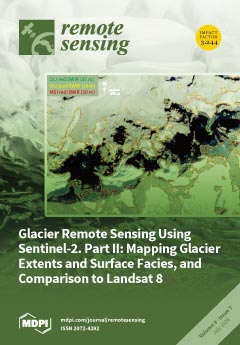Alpine swamp meadow on the Tibetan Plateau is among the most sensitive areas to climate change. Accurate quantification of the GPP in alpine swamp meadow can benefit our understanding of the global carbon cycle. The 8-day MODerate resolution Imaging Spectroradiometer (MODIS) gross primary production (GPP) products (GPP_MOD) provide a pathway to estimate GPP in this remote ecosystem. However, the accuracy of the GPP_MOD estimation in this representative alpine swamp meadow is still unknown. Here five years GPP_MOD was validated using GPP derived from the eddy covariance flux measurements (GPP_EC) from 2009 to 2013. Our results indicated that the GPP_EC was strongly underestimated by GPP_MOD with a daily mean less than 40% of EC measurements. To reduce this error, the ground meteorological and vegetation leaf area index (LAI
G) measurements were used to revise the key inputs, the maximum light use efficiency (ε
max) and the fractional photosynthetically active radiation (FPAR
M) in the MOD17 algorithm. Using two approaches to determine the site-specific ε
max value, we suggested that the suitable ε
max was about 1.61 g C MJ
−1 for this alpine swamp meadow which was considerably larger than the default 0.68 g C MJ
−1 for grassland. The FPAR
M underestimated 22.2% of the actual FPAR (FPAR
G) simulated from the LAI
G during the whole study period. Model comparisons showed that the large inaccuracies of GPP_MOD were mainly caused by the underestimation of the ε
max and followed by that of the undervalued FPAR. However, the DAO meteorology data in the MOD17 algorithm did not exert a significant affection in the MODIS GPP underestimations. Therefore, site-specific optimized parameters inputs, especially the ε
max and FPAR
G, are necessary to improve the performance of the MOD17 algorithm in GPP estimation, in which the calibrated MOD17A2 algorithm (GPP_MODR3) could explain 91.6% of GPP_EC variance for the alpine swamp meadow.
Full article





